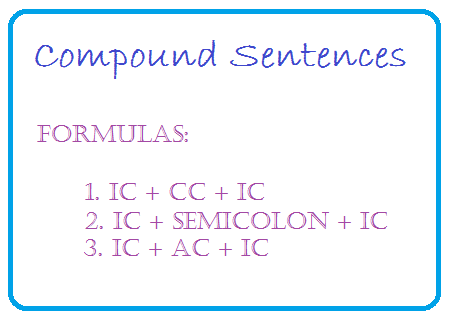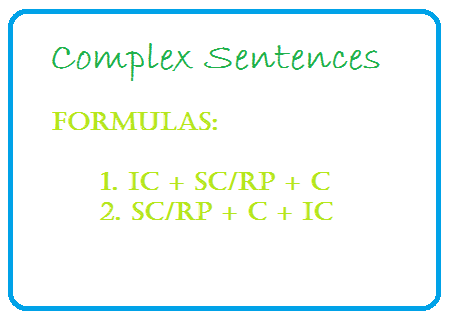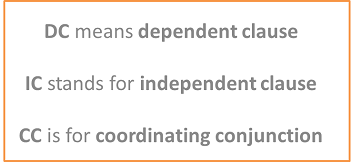Sentence Patterns
1. What is a Simple Sentence?
A sentence is an independent unit of writing and speech that expresses a complete thought. In order to be considered a sentence, a group of words must have a subject and a predicate, which always contains a verb. In its simplest sense, the subject refers to the doer of the action or to what the sentence is all about, while the predicate is the part of the sentence that modifies or tells something about the subject.
Sentences are very diverse and there are actually a lot of ways to construct them. In this article, you will be provided with the different patterns of sentences that you can follow. Additionally, some examples for each of these basic sentence patterns were also included so you will have a better grasp of the concepts.
2. Examples of a Simple Sentence
The most common among the various sentence patterns is the simple sentence, which consists of a single independent clause. Simply put, an independent clause is a group of words that expresses a complete idea and is composed of a subject and a verb. Also, as the name suggests, this type of clause can stand on its own.
Formula: Subject + Verb
Examples:
- They went to the mall.
In this example, the subject is the pronoun “they,” and the verb is the italicized word.
- Dogs bark.
Simple sentences can be as short as two words as shown above. The underlined word is the subject and the word “bark” is the verb.
- Tesla is awesome
The subject in this sentence is Tesla, and the italicized word is the verb which expresses a state of being.
3. Compound Sentence
A compound sentence is composed of two or more independent clauses and can be constructed in three different ways, as presented in the picture below.
Take note that:
IC stands for independent clause
CC means coordinating conjunction (examples: and, but, yet, or, nor, for, and so)
AC stands for adverbial conjunction (examples: however, nevertheless, consequently, thus, therefore, and moreover)
Examples:
- The CEO did not approve the proposal; he demanded for major changes.
This compound sentence follows the second formula: IC + semicolon + IC. The two independent clauses (green and orange) are joined together by a semicolon in between.
- I am on a diet, but I am really craving for ice cream.
In this example, the two independent clauses (blue and green) are linked by the coordinating conjunction “but.” So basically, it follows the first formula (IC + CC + IC).
- The movie was entertaining; however, it lacks depth.
The independent clauses (blue and green) are combined into a single compound sentence by the adverbial conjunction “however.” This sample sentence demonstrates how to apply the third formula: IC + AC + IC.
4. Complex Sentence
Complex sentences consist of at least one independent clause and one dependent clause. Unlike an independent clause, a dependent clause can’t stand on its own and its main function is to give additional details about the independent clause. Moreover, it is always composed of a subordinating conjunction or a relative pronoun at the beginning, followed by the clause itself.
There are two patterns under this type of sentence:
Note: IC stands for independent clause
SC means subordinating conjunction (examples: because, although, since, when, even if, while, and before)
RP stands for relative pronoun (examples: who, which, whoever, whatever, that, whichever, and whom)
C means clause
Examples:
- Because Nicole doesn’t like cheese, she never eats pizza.
This sample sentence follows the second formula: SC + C + IC. The word “because” is the subordinating conjunction that introduces the clause “Nicole doesn’t like cheese.” In short, the entire underlined part in the sentence above is the dependent clause, which is then followed by the independent clause (green).
- Tyrone gave a sandwich to the homeless man who was scavenging for food in the dumpster.
This sentence shows the second pattern: IC + RP + C. The independent clause (green) is followed by the relative pronoun “who,” which then introduces the clause “was scavenging for food in the dumpster.”
*Note: The whole underlined part is the dependent clause.
5. Compound-Complex Sentence
Among the different sentence patterns, the compound-complex sentence is the most advanced. This requires at least one dependent clause plus two (or more) independent clauses.
Formula: DC + IC + CC + IC
For you to understand the concept better, take a look at the sample sentence below.
Although I love hiking, I haven’t had the time to go lately, and I haven’t found anyone to hike with.
In the given example, the underlined part is the dependent clause which is composed of the subordinating conjunction “although,” and the clause itself which is “I love hiking.” After the dependent clause, you will see the two independent clauses (green and orange) linked together by the coordinating conjunction “and.”
Final Thoughts
In order to improve your overall writing style and come up with a well-written composition, you must try to experiment with the different sentence patterns. If you tend to employ the same pattern throughout your entire write-up, it is more likely that your written piece will be very boring to read. To sum up, making use of varying sentence patterns does not only help in engaging your readers, but also facilitates in communicating your ideas more effectively.





